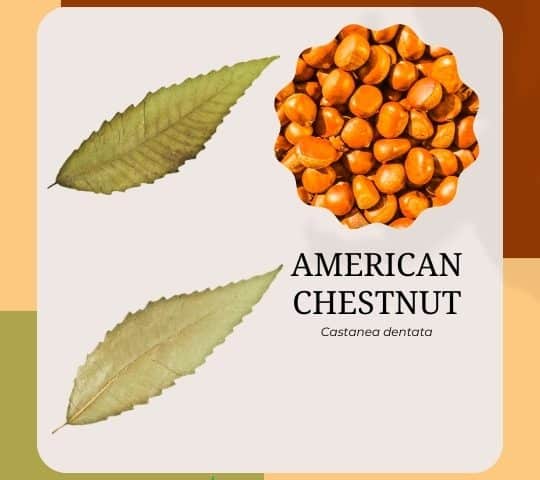
What Exactly is Honey?
December 20, 2023
Mushroom Monday: Pear-shaped Puffball
December 25, 2023

The American Chestnut
In December, you might be thinking of roasted chestnuts. If that got you thinking about chestnut trees, you might have come across the story of the American chestnut (Castanea dentata). We thought we’d share a little about it with you.
The American chestnut was once a common tree in America. It was around for millions of years and was on millions of acres in the eastern part of the country and could grow in a variety of places. It was a food source both for people and animals and was an integral part of the environment. It was also used as a source of wood by people and became tied culturally to different groups.
Roughly one hundred years ago, it was affected by blight caused by a fungus (Cryphonectria parasitica) that came from other parts of the world. It came with other types of chestnut trees that were resistant to the blight and spread to the American trees. This led to many of the native trees dying and being wiped out. There are still some trees today, but the numbers are drastically reduced.
The blight kills the trees by going around the trunk which prevents nutrients from moving up through the tree causing the tree above that point to die. In these situations, the roots of the tree can still be alive but the blight can affect what grows from them and prevents them from getting to the point where they can reproduce. The blight, which can be spread in a variety of ways, looks like orange colored dots and lives on trees but can’t survive in soil. Trees can die quickly once the blight spreads on them. Many trees a person might come across today are small ones growing from stumps of larger trees that died from blight.
There are efforts today to try and bring the population numbers of the American chestnut back up. Part of the work has focused on developing a variety that will be resistant to the blight that reduced the numbers of trees years ago. There is the idea that if this is successful, similar measures could be taken to improve the populations of other trees. There is also work developing hybrids that can be resistant to the blight.
The American chestnut is a deciduous tree that is native to the eastern part of America. It grows over forty feet in height. It grows better in acidic soil that is moist and that drains well. The flowers of the tree are white and the leaves have a saw-tooth edge to them.
As you roast chestnuts this December, keep in mind the American chestnut tree.



